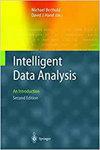Unsupervised multi-source domain adaptation for person re-identification via sample weighting
IF 0.8
4区 计算机科学
Q4 COMPUTER SCIENCE, ARTIFICIAL INTELLIGENCE
引用次数: 0
Abstract
The aim of unsupervised domain adaptation (UDA) in person re-identification (re-ID) is to develop a model that can identify the same individual across different cameras in the target domain, using labeled data from the source domain and unlabeled data from the target domain. However, existing UDA person re-ID methods typically assume a single source domain and a single target domain, and seldom consider the scenario of multiple source domains and a single target domain. In the latter scenario, differences in sample size between domains can lead to biased training of the model. To address this, we propose an unsupervised multi-source domain adaptation person re-ID method via sample weighting. Our approach utilizes multiple source domains to leverage valuable label information and balances the inter-domain sample imbalance through sample weighting. We also employ an adversarial learning method to align the domains. The experimental results, conducted on four datasets, demonstrate the effectiveness of our proposed method.基于样本加权的无监督多源域自适应人物再识别
人再识别(re-ID)中的无监督域自适应(UDA)的目的是开发一个模型,该模型可以使用来自源域的标记数据和来自目标域的未标记数据,在目标域的不同相机中识别同一个人。然而,现有的UDA人员重新识别方法通常假设一个单一的源域和一个单一的目标域,很少考虑多个源域和一个单一的目标域的场景。在后一种情况下,域之间样本量的差异可能导致模型训练的偏差。为了解决这一问题,我们提出了一种基于样本加权的无监督多源域自适应人物重识别方法。我们的方法利用多个源域来利用有价值的标签信息,并通过样本加权来平衡域间的样本不平衡。我们还采用了一种对抗性学习方法来对齐域。在四个数据集上进行的实验结果证明了我们提出的方法的有效性。
本文章由计算机程序翻译,如有差异,请以英文原文为准。
求助全文
约1分钟内获得全文
求助全文
来源期刊

Intelligent Data Analysis
工程技术-计算机:人工智能
CiteScore
2.20
自引率
5.90%
发文量
85
审稿时长
3.3 months
期刊介绍:
Intelligent Data Analysis provides a forum for the examination of issues related to the research and applications of Artificial Intelligence techniques in data analysis across a variety of disciplines. These techniques include (but are not limited to): all areas of data visualization, data pre-processing (fusion, editing, transformation, filtering, sampling), data engineering, database mining techniques, tools and applications, use of domain knowledge in data analysis, big data applications, evolutionary algorithms, machine learning, neural nets, fuzzy logic, statistical pattern recognition, knowledge filtering, and post-processing. In particular, papers are preferred that discuss development of new AI related data analysis architectures, methodologies, and techniques and their applications to various domains.
 求助内容:
求助内容: 应助结果提醒方式:
应助结果提醒方式:


